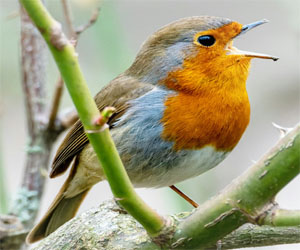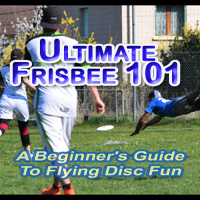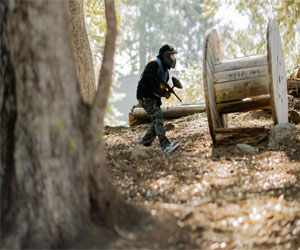


Discovering The Diverse Homes Of Avian Wonders

Birds, with their dazzling plumage, captivating songs, and graceful flights, are enchanting creatures. But to truly appreciate their beauty and understand their way of life, it is essential to explore their habitats. Bird habitat exploration is a journey into the diverse ecosystems where these avian wonders thrive. In this article, we will delve into the significance of bird habitat exploration and the rich insights it provides into the world of birds.
Ecosystem Variety: Bird habitats vary dramatically, from dense rainforests and coastal wetlands to arid deserts and grassy meadows. Each habitat is a unique tapestry of plants, water sources, and microclimates, offering distinct challenges and opportunities for the birds that call them home. By exploring different habitats, we gain a profound appreciation for the adaptability of birds and the ecosystems they inhabit.
Biodiversity Hotspots: Bird habitat exploration often leads to encounters with a wide array of species, both avian and non-avian. Many birdwatchers are surprised by the diversity of life they discover in these natural areas. These hotspots of biodiversity are crucial for the survival of countless species, making them a focus of conservation efforts.
Understanding Niche Occupancy: Different bird species have evolved to occupy specific ecological niches within their habitats. Observing these niches can reveal intricate patterns of competition and cooperation among species. For example, in a wetland habitat, various bird species may have distinct feeding strategies, such as waders probing in the mud and waterfowl foraging on the surface.
Migration And Seasonal Changes: Bird habitat exploration allows us to witness the remarkable journeys of migratory birds. These avian travelers cover vast distances between their breeding and wintering grounds. Birdwatchers in these habitats can experience the excitement of witnessing the arrival of migratory flocks, marking the changing seasons.
Conservation Insights: Understanding the habitats that birds rely on is critical for conservation. Many bird species are dependent on specific habitat types, and these areas are often threatened by habitat destruction and climate change. By exploring bird habitats, we can better appreciate the urgency of conserving these vital areas and work towards their protection.
Educational Opportunities: Bird habitat exploration offers rich educational opportunities. It can be a valuable tool for teaching ecology, environmental science, and biodiversity. Schools, nature centers, and environmental organizations often organize field trips to bird habitats to engage students and the public in conservation efforts.
Personal Connection: Exploring bird habitats allows individuals to establish a personal connection with nature. Being immersed in the sights and sounds of these natural environments provides a sense of serenity and rejuvenation. It fosters an appreciation for the intricate relationships between birds, their habitats, and the overall ecosystem.
Bird habitat exploration is a gateway to a deeper understanding of birds and the natural world. Whether you're a seasoned birder or a beginner, embarking on journeys to different bird habitats will enrich your knowledge and appreciation of these remarkable creatures. It's a journey that can inspire conservation efforts, foster a connection to nature, and instill a sense of wonder that will last a lifetime. So, grab your binoculars, field guide, and a sense of adventure, and set out to explore the diverse homes of avian wonders.
A Path To Excellence
 1. Throwing Techniques: The foundation of any Ultimate Frisbee player's skill set is mastering different throwing techniques. These include:
1. Throwing Techniques: The foundation of any Ultimate Frisbee player's skill set is mastering different throwing techniques. These include:
Forehand: The forehand throw, also known as the flick, involves gripping the disc with your thumb on top and your fingers underneath. It's a versatile throw used for short, medium, and long-distance passes.
Backhand: The backhand throw is executed by gripping the disc with your thumb underneath and your fingers on top. It's another essential throw for various situations in the game.
Hammer: The hammer throw is an overhead toss that can be useful for making passes over defenders. It requires a unique grip and throwing motion.
Practicing these throws, both for distance and accuracy, is fundamental for effective gameplay.
2. Catching Skills: Catching is a vital aspect of Ultimate. Players must be proficient in catching both forehand and backhand passes. A good catch involves tracking the disc, positioning yourself correctly, and using proper hand placement to secure the catch. Hand-eye coordination and the ability to adjust to different flight patterns are crucial skills to develop.


A Phenomenon On The Rise
 Community Building: Pickleball is more than just a game; it's a social activity that promotes interaction and community building. Local pickleball clubs, groups, and leagues have sprouted up in communities across the globe. These groups provide a platform for socialization, camaraderie, and support. Pickleball players often forge lasting friendships on the courts, both indoors and outdoors.
Community Building: Pickleball is more than just a game; it's a social activity that promotes interaction and community building. Local pickleball clubs, groups, and leagues have sprouted up in communities across the globe. These groups provide a platform for socialization, camaraderie, and support. Pickleball players often forge lasting friendships on the courts, both indoors and outdoors.
Intergenerational Play: Pickleball's cultural impact extends to intergenerational play. It's a sport where grandparents can compete alongside their grandchildren, fostering connections between different age groups. This inclusivity across generations strengthens family bonds and community ties, making it a unique cultural phenomenon.
Economic Boost: The growing popularity of pickleball has led to an economic boost in areas where the sport is thriving. This includes the construction and maintenance of pickleball courts, the sale of paddles and equipment, and hosting tournaments and events. Local businesses, from restaurants to sporting goods stores, often benefit from the influx of players and spectators.
Tournaments And Events: The competitive side of pickleball is a significant driver of its cultural impact. Tournaments and events draw players and enthusiasts from near and far, contributing to a sense of excitement and camaraderie. Many of these events incorporate charity fundraisers, further cementing pickleball's positive influence on communities.
Keys To Victory On The Battlefield
 2. Cover And Suppression
2. Cover And Suppression
Suppression and providing cover fire are vital elements in winning paintball games. By keeping your opponents' heads down and restricting their movements, you can create opportunities for your team to advance, secure objectives, or take advantageous positions. Supporting your teammates with covering fire allows them to maneuver more effectively.
3. Flanking Maneuvers
Outflanking your opponents is a classic and effective paintball strategy. By taking a wide route to the side or rear, you can catch your opponents in a crossfire and disrupt their plans. Flanking maneuvers can be especially powerful when combined with effective communication and coordination.
4. Defense And Control
In certain scenarios, adopting a defensive approach can be a winning strategy. Defend critical areas, objectives, or positions to maintain control and prevent the opposing team from advancing. Defensive play requires patience, excellent marksmanship, and teamwork to hold your ground.
5. Adaptability And Flexibility
Paintball games can be unpredictable, and the ability to adapt and be flexible in your strategies is a key element in achieving victory. Stay open to changing tactics as the game evolves. What worked in one round may not work in the next, so being willing to adjust is crucial.
6. Teamwork And Roles
Teamwork is an integral part of winning paintball games. Within your team, define roles based on each player's strengths and preferences. Roles can include snipers, assault players, defenders, and more. When these roles are strategically combined, they can be highly effective in achieving objectives and eliminating opponents.
7. Map Awareness
Familiarity with the paintball field's layout is essential. Knowing the terrain, hiding spots, and potential ambush locations can give you a significant edge. By understanding the map, you can predict enemy movements and plan your strategies accordingly.






Riding The Waves Of Adventure
 At its core, ocean surfing is a dynamic dance between man and the ocean's mighty waves. It's an awe-inspiring display of athleticism, courage, and connection with nature. The thrills of ocean surfing are many, and they are what draw surfers from all corners of the globe to seek out the perfect wave.
At its core, ocean surfing is a dynamic dance between man and the ocean's mighty waves. It's an awe-inspiring display of athleticism, courage, and connection with nature. The thrills of ocean surfing are many, and they are what draw surfers from all corners of the globe to seek out the perfect wave.
One of the most exhilarating aspects of ocean surfing is the pure force of the waves. As surfers paddle out to meet the ocean, they are met with the raw power of the sea. Waves can rise to towering heights, their roars drowning out everything else. The surfer must harness this energy and use it to propel themselves forward, catching a wave at just the right moment. It's a delicate balance between challenge and exhilaration.
The thrill of riding a wave, once caught, is indescribable. It's a rush that surges through every cell of the surfer's body. The moment they pop up onto their board and begin to ride the face of the wave, a sense of freedom and ecstasy takes over. It's a unique feeling of weightlessness and connection with the ocean, a moment where time seems to stand still.
Each wave is different, offering its own unique set of thrills. Some waves are fast and powerful, requiring surfers to make split-second decisions. Others are long and mellow, allowing for a more leisurely ride. Then, there are the barrel waves, where the surfer is completely enclosed by the curling wave - a heart-pounding experience akin to being in a water tunnel.
Injury Prevention Techniques For Athletes
 3. Flexibility And Stretching: Flexibility is crucial for preventing injuries. Stretching exercises improve your range of motion, making you less prone to muscle pulls and tears. Dynamic stretching before activity and static stretching after can help.
3. Flexibility And Stretching: Flexibility is crucial for preventing injuries. Stretching exercises improve your range of motion, making you less prone to muscle pulls and tears. Dynamic stretching before activity and static stretching after can help.
4. Correct Technique And Form: Proper technique and form are paramount in preventing sports injuries. Inadequate form increases the risk of overuse injuries and acute trauma. Athletes should receive coaching to ensure they perform their sport correctly.
5. Cross-Training: Engaging in multiple sports or activities can reduce the risk of overuse injuries. Cross-training allows different muscle groups to be used, preventing excessive strain on one set of muscles or joints.
6. Equipment Maintenance: Athletes should regularly inspect and maintain their sports equipment. Whether it's a bicycle, running shoes, or protective gear, keeping equipment in good condition reduces the risk of accidents caused by faulty gear.
7. Adequate Rest And Recovery: Overtraining is a common cause of sports injuries. Athletes must prioritize rest and recovery. Sleep, nutrition, and relaxation are all vital components of recovery.
8. Hydration And Nutrition: Dehydration can lead to muscle cramps and decrease your body's ability to regulate temperature. Proper nutrition is equally important, as it provides the necessary fuel for your body to function optimally and recover from physical stress.